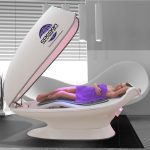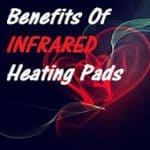Last Updated on 3 years by Francis
Contents
Can Infrared Bio Mats Help You Sweat Out Toxins?

You may have heard of Bio Mats –
These mats convert electricity into Far Infrared Rays, which are an invisible form of
Far
They can reduce inflammation and swelling, relieve pain, and stimulate beneficial enzyme activity that promotes healing.
Can Infrared Flush Out Toxins?
Those in the alternative health community talk about
The idea of the ‘detox’ is overblown.
Our kidneys already do a very good job of removing ‘toxins’ from the body.
We excrete most toxins through urine. We might feel
That’s not to say that Infrared bio mats can’t help us to feel better, or that there are no benefits to them. There are numerous benefits to
Lymph Stimulation
Improving lymph flow and drainage could well help to clear toxins out of your body.
The lymphatic fluid is important because it contains immune cells, and can help to fight off infection.
If your lymphatic circulation is poor, then you are more likely to end up feeling under the weather. Improving the flow of lymphatic fluid could be an easy way of improving your wellbeing.
Better Circulation
Infrared bio mats can also help to improve your circulation, which, again is important for helping to clear toxins from your body. Poor circulation can contribute to slower wound healing and to longer-lasting injuries. It can also add to soreness and general aches and pains after exercise.
Infrared mats can help to boost your circulation and provide injured or inflamed areas of the body (or just deep tissue in general) with more blood flow, thereby helping to flush out any toxins, clear away lactic acid, and supply the tissue with oxygenated blood and with other nutrients so that it can heal properly.
Don’t Fear Infrared
A lot of people fear the idea of being exposed to
It is no more dangerous to be exposed to than the light from an incandescent bulb.
We feel warm when we are exposed to
That warmth is a major part of the benefit of
What makes
Therefore, we feel more benefit from it because it doesn’t just ‘heat the skin and make us sweat’. That penetration is important.
Can Infrared Heat Treatment be Dangerous?
Most people will find the ‘detox’ benefit of
Infrared
Detox and Weight Management
Detox treatments are often marketed as a weight loss aid. This is unfortunate, since the idea of ‘detoxing to lose weight’ is questionable, and it hampers the reputation of something that is, overall, a good
When you ‘sweat out toxins’ to lose weight, what you are really losing is just water weight.
While you may be lighter on the scales for a day or two, and you may look smaller, you have not lost fat.
This means that you are not really any healthier in terms of risk of Type 2 diabetes, cardiovascular disease, or certain cancers.
You will regain the water weight that was lost very quickly when you start eating or drinking again.
If you are an athlete who needs to show a smaller number on the scales to weigh in for a tournament, then sweating out some water weight is a legitimate strategy. For most people, however, attempting to lose weight through sweating will be counter-productive, since it can lead to dehydration and the associated risks.
In Conclusion
Infrared bio mats can be useful for healing wounds and improving your wellbeing, as well as reducing pain and helping with inflammation, soreness, and general aches and pains.
In some ways, they are indeed a detox aid, but at the moment the science behind sweating out toxins is questionable.
Some people, such as painters and decorators or firefighters who are exposed to dusty, dirty environments really do believe that sweating out toxins works.
If it makes them feel better to use an infrared sauna or mat, then that’s great news for them.
Infrared heat mats can be used at home as a treatment for a wide range of conditions, and they are affordably priced so you could pick one up for use at home.
They could be a good drug-free option for recovering from sports-related aches and pains, as well as arthritis and injuries.
Important Citations
1. https://www.ncbi.nlm.nih.gov/pmc/articles/PMC4935255/
2. https://www.ncbi.nlm.nih.gov/pmc/articles/PMC5505738/









